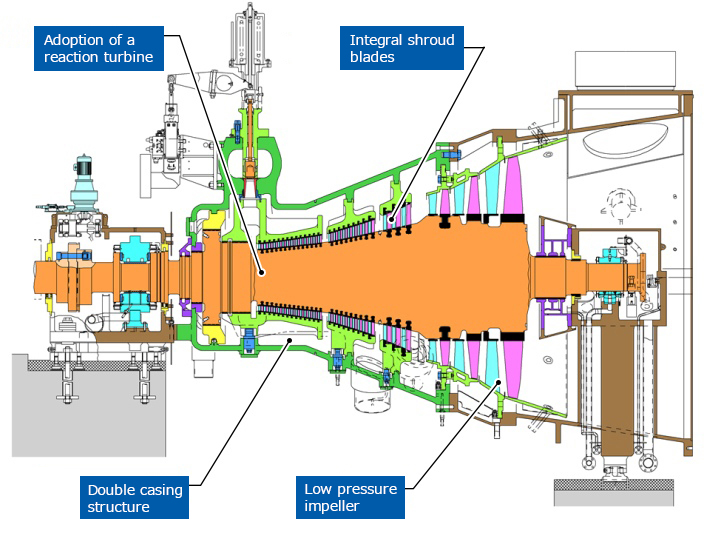Turbine material details
The
Turbine is operated in hi temperature, pressure ,speed and erosion environment.
So materials need are for Cr, Ni and Mo, V-based alloys for operation at 537 to
600°C with (i) adequate creep rupture strength; (ii) ability to cast them into
the required size and shape, and to inspect for defects; and (iii) ability to
perform initial fabrication welding (on cast or wrought forms, including
dissimilar metal welds), and to make repair welds on aged material. It is
observed that percentage of Cr and Ni are increased to improve the quality of
steel for the different parts of the turbine.

|
Component |
566°C |
620°C |
700°C |
760°C |
|
Casings/Shells |
CrMoV
(cast) |
9-10%Cr(W) |
CF8C-Plus |
CCA617 |
|
(valves;
steam |
10CrMoVNb |
12CrW(Co) |
CCA617 |
Inconel
740 |
|
chests;
nozzle box; |
CrMoWVNbN |
Inconel
625 |
CF8C-Plus
(?) |
|
|
cylinders) |
IN
718 Nimonic 263 |
|||
|
Bolting |
422 |
9-12%CrMoV |
Nimonic
105 |
U700 |
|
9-12%CrMoV |
A286 |
Nimonic
115 |
U710 |
|
|
Nimonic
80A |
IN718 |
Waspaloy |
U720 |
|
|
IN718 |
IN718
Allvac718Plus |
Nimonic
105 Nimonic 115 |
||
|
Rotors/Discs |
1CrMoV |
9-12%CrWCo |
CCA617 |
CCA617 |
|
12CrMoVNbN |
12CrMoWVNbN |
Inconel
625 |
Inconel
740 |
|
|
26NiCrMoV115 |
Haynes
230 Inconel 740 |
|||
|
Vanes/Blades |
422 |
9-12%CrWCo |
Wrought
Ni- |
Wrought
Ni- |
|
10CrMoVNbN |
base |
base |
||
|
Piping |
P22 |
P92 |
CCA617 |
Inconel
740 |
Material for casing has complex structure
, It should have been hi steam oxidation resistance, castability or forged still
be heat-treated and tempered to produce the best combination of high
temperature strength and ductile-to-brittle transition temperature (DBTT) behaviour
at low temperature.
The choice of blading material will
depend on (i) the-temperature-of-the rotor, hence on the thermal expansion
characteristics of the component material, and (ii) the size and shape of the
blade, which will be designed using computational fluid dynamics modeling.
The main issues for rotors/discs
concern manufacturing, especially the capability to produce large castings and
forgings. With modern secondary steel making practices, such as ladle furnaces,
electroslag remelting to control freezing segregation, and control of the
sulfur and phosphorus levels in the alloy, very large rotors now can be
produced, but experience is related mostly to Cr-Mo-V alloys (used in current
541-566°C plants), and for 12 Cr alloys (needed for advanced steam cycles to
620°C).
This is the material plan for different
parts of the turbine for super critical steam turbine HP and IP section.
Usage of higher grade of steel for 700-760degC and design data points are not available. Major issues are forging and casting procedure, weldability and costing of the materials and manufacturing.

Comments
Post a Comment
If you any doubt please send me mail on snehamaity@yahoo.co.in